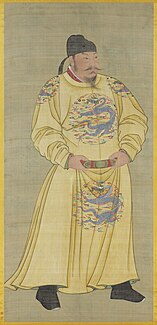 W
WThe Battle of Mu'tah was fought in September 629 CE, near the village of Mu'tah, east of the Jordan River and Karak in Karak Governorate, between the forces of the Islamic prophet Muhammad and the forces of the Byzantine Empire and their Arab Christian Ghassanid vassals.
 W
WThe Battle of Nineveh was the climactic battle of the Byzantine-Sassanid War of 602–628.
 W
WThe Battle of the Trench, also known as the Battle of Khandaq and the Battle of the Confederates, was a 27-day-long defence by Muslims of Yathrib from Arab and Jewish tribes. The strength of the confederate armies is estimated around 10,000 men with six hundred horses and some camels, while the Medinan defenders numbered 3,000.
 W
WThe Byzantine–Sasanian War of 602–628 was the final and most devastating of the series of wars fought between the Byzantine Empire and the Sasanian Empire of Iran. The previous war between the two powers had ended in 591 after Emperor Maurice helped the Sasanian king Khosrow II regain his throne. In 602 Maurice was murdered by his political rival Phocas. Khosrow proceeded to declare war, ostensibly to avenge the death of the deposed emperor Maurice. This became a decades-long conflict, the longest war in the series, and was fought throughout the Middle East: in Egypt, the Levant, Mesopotamia, the Caucasus, Anatolia, Armenia, the Aegean Sea and before the walls of Constantinople itself.
 W
WThe Battle of Hulao or Battle of Sishui, on 28 May 621 was the main and final battle of the Luoyang–Hulao campaign between the rival Tang, Zheng, and Xia regimes during the transition from Sui to Tang. It was a decisive victory for the Tang prince Li Shimin, through which he was able to subdue two rival warlords, Dou Jiande who headed the Xia regime in Hebei, and Wang Shichong, the self-declared emperor of the Zheng dynasty. The battle was fought at the strategically important Hulao Pass, east of Luoyang.
 W
WThe Battle of Khaybar was fought in the year 628 between Muslims and the Jews living in the oasis of Khaybar, located 150 kilometers (93 mi) from Medina in the north-western part of the Arabian peninsula, in modern-day Saudi Arabia. Jewish tribes reportedly arrived in Hijaz in the wake of the Jewish-Roman wars and introduced agriculture, putting them in a culturally, economically and politically dominant position. According to Muslim sources, the Muslim soldiers attacked the native Jews who had barricaded themselves in forts.
 W
WThe Battle of Hulao or Battle of Sishui, on 28 May 621 was the main and final battle of the Luoyang–Hulao campaign between the rival Tang, Zheng, and Xia regimes during the transition from Sui to Tang. It was a decisive victory for the Tang prince Li Shimin, through which he was able to subdue two rival warlords, Dou Jiande who headed the Xia regime in Hebei, and Wang Shichong, the self-declared emperor of the Zheng dynasty. The battle was fought at the strategically important Hulao Pass, east of Luoyang.
 W
WThe Sasanian conquest of Egypt took place between 618 and 621, when the Sasanian Persian army defeated the Byzantine forces in Egypt and occupied the province. The fall of Alexandria, the capital of Roman Egypt, marked the first and most important stage in the Sasanian campaign to conquer this rich province, which eventually fell completely under Persian rule within a couple of years. An account of the event is given by A. J. Butler.
 W
WThe Siege of Constantinople in 626 by the Sassanid Persians and Avars, aided by large numbers of allied Slavs, ended in a strategic victory for the Byzantines. The failure of the siege saved the Empire from collapse, and, combined with other victories achieved by Emperor Heraclius the previous year and in 627, enabled Byzantium to regain its territories and end the destructive Roman–Persian Wars by enforcing a treaty with borders status quo c. 590.
 W
WThe Battle of Uhud was fought on Saturday, 23 March 625 CE, in the valley north of Mount Uhud. The Qurayshi Meccans, led by Abu Sufyan ibn Harb, commanded an army of 3,000 men toward Muhammad's stronghold in Madinah. The battle was the only battle throughout the Muslim–Quraish War in which the Muslims did not manage to defeat their enemy and it came just nine months after the Battle of Badr.
 W
WThe Xuanwu Gate Incident was a palace coup for the throne of the Tang dynasty on 2 July 626, when Prince Li Shimin and his followers assassinated Crown Prince Li Jiancheng and Prince Li Yuanji. Li Shimin, the second son of Emperor Gaozu, was in an intense rivalry with his elder brother Li Jiancheng and younger brother Li Yuanji. He took control and set up an ambush at Xuanwu Gate, the northern gate leading to the Palace City of the imperial capital Chang'an. There, Li Jiancheng and Li Yuanji were murdered by Li Shimin and his men. Within three days after the coup, Li Shimin was installed as the crown prince. Emperor Gaozu abdicated another sixty days later and passed the throne to Li Shimin, who would become known as Emperor Taizong.